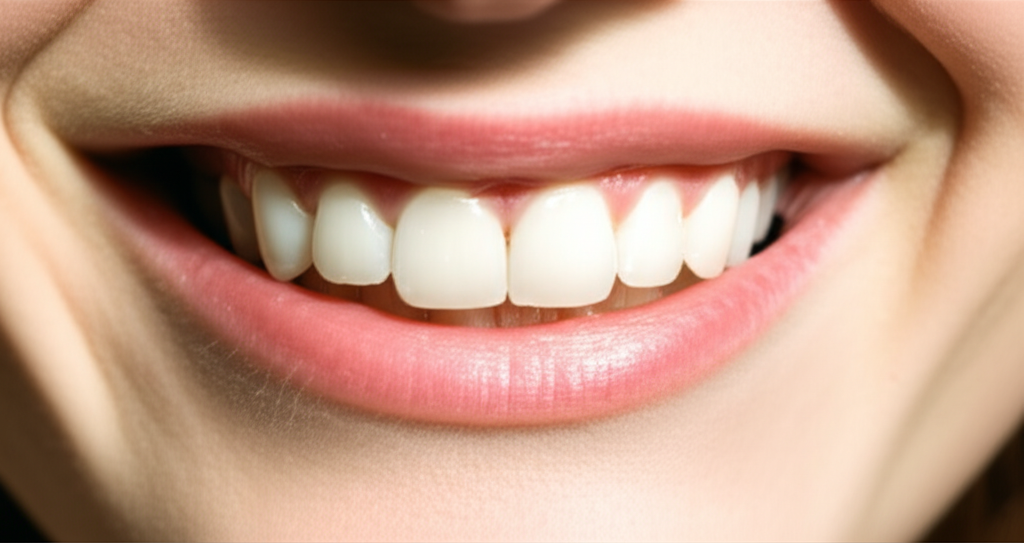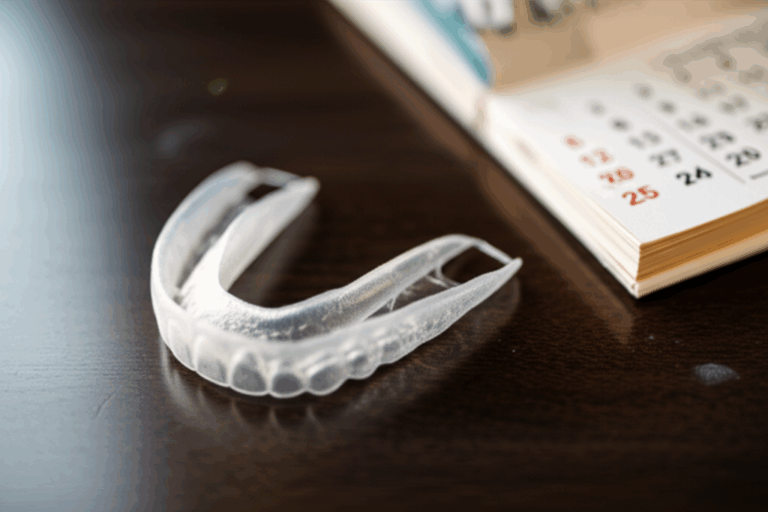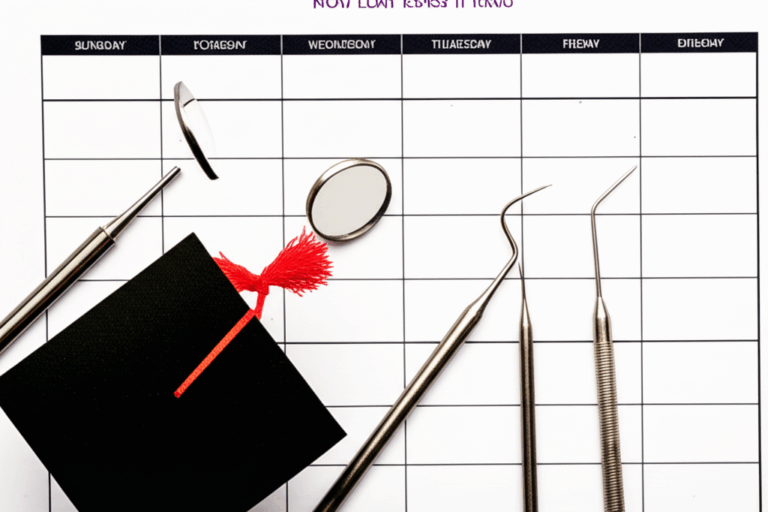
How Often Should You See the Dentist? Your Personalized Guide to Check-Up Frequency
Let’s be real—a lot of us have heard: “You should see the dentist every six months.” Maybe it was your childhood dentist, your mom, or a TV commercial with a smiling hygienist. But if you’re like most people, you might be thinking, Does everyone really need to visit the dentist twice a year? Or maybe, My teeth feel fine, why go? Am I just wasting time and money going so often?
You’re not the only one asking these questions. The truth is, there’s no simple answer. Whether you brush every day or have missed a few check-ups and want to know what’s best—this guide is for you.
In This Article
- The Real Question: “How Long Should I Go Between Dental Check-Ups?”
- The Six-Month Rule: Fact or Fiction?
- What Happens at a Dentist Check-Up (and Why It Matters)
- The Real Factors That Shape Your Ideal Visit Schedule
- Risk Factors: Are You in a High, Medium, or Low-Risk Group?
- What Can You Gain by Staying on Top of Visits?
- Red Flags: When You Should See a Dentist ASAP
- Keeping Your Teeth Healthy Between Appointments
- Bottom Line: How to Decide Your Dental Check-Up Frequency
The Real Question: “How Long Should I Go Between Dental Check-Ups?”
Let’s start with the big question: How often do you actually need to see the dentist for a check-up? If you’ve looked up “how long between dentist check ups,” you’re not just wanting a date. You’re really asking, is everyone the same, and if you’re doing what others do. Or maybe you want a reason to skip that next appointment.
Here’s the truth. Dentists everywhere now say—there’s no single answer for everyone. That six-month rule we all know is a good place to start, but it isn’t a rule, and it isn’t what every mouth needs.
Most important: If you want to keep your teeth (and gums) healthy, finding your personal check-up schedule is more important than just following the calendar.
Is It Okay to Go Once a Year? Or Is Every Six Months a Must?
The simple answer: It depends on your risk. Many people do fine with yearly check-ups if their mouth is healthy and their dentist says it’s okay. Others (like people with gum problems or a lot of fillings) might visit every three or four months. The key? Know what you need and work with your dentist to pick the right schedule.
The Six-Month Rule: Fact or Fiction?
So why do we hear about going every six months? Here’s where it came from and why it stuck.
Why Six Months?
The “six-month dental check-up” rule got big in the 1900s, partly thanks to early research and some push from toothpaste companies. It stuck because it works for most people:
- You catch issues—like cavities and gum trouble—early.
- You get plaque removed before it turns into tough tartar.
- Your dentist checks for anything serious, like oral cancer.
But researchers and groups like the American Dental Association (ADA) and National Health Service (NHS) now say, your check-up schedule should fit you—your mouth, your habits, and your health.
What Really Happens at a Check-Up?
Wonder what happens in those half-hour visits? Here’s a look:
- Full mouth check: Your dentist looks at every tooth, your gums, tongue, and rest of your mouth.
- Cleaning: The hygienist cleans off plaque and tartar you miss at home.
- Checking for cancer: Every check-up, they look for odd spots or early signs you’d never notice.
- Brushing and flossing talk: You’ll get help or reminders on how to care for your teeth.
Dental X-rays: How Often?
You don’t always need X-rays every time. Your dentist picks how often based on your age, dental history, and how your teeth are doing. Healthy adults often get them every year or two. If you get many cavities, it might be more often.
What Happens at a Dentist Check-Up (and Why It Matters)
Seeing the dentist may feel like a bother, but those regular visits are more than just a chore. They’re your best chance to catch problems early, keep your own teeth longer, and avoid emergencies that can hurt your wallet and your mouth.
A Closer Look: What Your Dentist Checks For
Cavities and Decay: Dentists can spot small holes before they become big, painful ones.
Gum Disease: Almost half of adults over 30 have some gum disease. Dentists check for early signs of gum swelling and infections.
Oral Cancer: It isn’t common, but regular visits help your dentist spot early signs that are easier to fix.
Fillings, Crowns, Bridges: Dental repair can wear out. Visits help your dentist catch cracks or leaks before they cause trouble.
Tooth and Jaw Check: Things like teeth grinding, jaw pain, or teeth moving can be caught and fixed early.
Why Does This Matter?
Because finding problems early is almost always cheaper, simpler, and less painful than waiting until it really hurts.
The Real Factors That Shape Your Ideal Visit Schedule
So, how do you know how often YOU need to go? Here are the biggest things that decide your dental visit schedule:
Your Mouth Right Now
Picture your oral health like a stop light:
- Green Light (Low Risk): No cavities for years, healthy gums, great brushing. You might be able to wait 9 or even 12 months—ask your dentist first.
- Yellow Light (Medium Risk): Some cavities, gum problems before, maybe a couple fillings. Every six months is best.
- Red Light (High Risk): Gum disease now, lots of fillings, or dental problems a lot. Better to come every three or four months.
Special Health and Risk Factors
Not all mouths are the same. Some things put you at more risk. You might need to visit more if you:
- Have gum disease: You need to go every three to four months to keep it under control.
- Get cavities easily: The more often you go, the sooner your dentist finds them—and the less drilling needed.
- Have health problems like diabetes or heart disease: These increase your risk for gum trouble.
- Take medicine that dries your mouth: Less spit equals more cavities.
- Smoke or use tobacco: This ups your odds of gum disease and oral cancer.
- Pregnancy: Hormones change your gums; your dentist might want more visits.
- Braces or dental appliances: These need extra cleaning and checking, both at home and at the dentist.
Age
- Kids: Dentists and kids’ dental groups say first visit by age one or within six months after the first tooth. Regular check-ups (every six months or as told) help stop cavities and start good habits.
- Older Adults: Medicines, dry mouth, gums pulling back, and old dental work mean older adults need to be extra careful.
Cleaning Habits
Let’s be honest—if you don’t always floss, or if you love late-night snacks, you’re at higher risk and shouldn’t skip visits.
Lifestyle Choices
Sweet foods, sour drinks, grinding your teeth, and using your teeth to open things (no one’s judging!) can all change how often you should get checked.
Want to know more about dental repairs and options, like crowns and bridges? Check out info from a crown and bridge lab for more.
Risk Factors: Are You in a High, Medium, or Low-Risk Group?
Still not sure? Here’s a quick way to tell your risk, based on research and experts:
High-Risk
- Active gum disease
- Cavities again and again
- Smokers or use tobacco
- Diabetes or heart problems
- Mouth feels very dry
- Pregnant women
- Braces or appliances
- Many dental emergencies
Best check-up: Every 3-4 months
Medium-Risk
- Some new fillings
- Mild gum trouble before
- Not brushing/flossing daily
- Eat lots of sweet or sour foods/drinks
Best check-up: Every 6 months
Low-Risk
- No recent cavities or gum trouble
- Brush and floss really well
- Not much sugar or acid in food
Possible check-up (with dentist’s okay): Every 9–12 months
Remember: No matter what you read online, your best time between visits is what you and your dentist pick together.
What Can You Gain by Staying on Top of Visits?
You might say, “But I brush and floss, can’t I visit less often?” While good home care helps a lot, there’s still big reasons to keep up with dental visits.
More Than Just Clean Teeth
1. Find Problems Early—Save Money and Time
- Small issues stay small when caught early. A tiny cavity is simple. Wait too long? It could mean root canals or losing a tooth.
2. Healthy Gums = Healthy Body
- Gum disease can affect your heart, cause strokes, and make diabetes worse. Regular dental visits protect more than your mouth.
3. Keep Your Own Teeth Longer
- People who go for regular checks keep their teeth more as they get older.
4. Fresh Breath and Brighter Smile
- Cleanings remove deep-down gunk and stains, stop bad breath, and boost your confidence.
5. Personal Care Advice
- Your mouth changes with time. Only your dentist can give tips that work just for you.
Got dental prosthetics or complicated dental work? Your check-up schedule might be even more important. Find out how new digital dental lab tech helps patients and dentists with careful care.
Red Flags: When You Should See a Dentist ASAP
Dental problems don’t wait for a good time. Sometimes, putting it off can make a small problem turn into a big one—fast.
See the dentist quickly if you have:
- Sudden or strong tooth pain
- Swelling in your face or gums
- Bleeding gums or mouth that won’t stop
- Broken, cracked, or knocked-out tooth
- Loose grown-up tooth
- Pain with hot/cold that doesn’t go away
- Sores or lumps in your mouth lasting more than two weeks
Have any of those? Don’t wait. Acting fast can save your tooth.
Keeping Your Teeth Healthy Between Appointments
Your dentist is important, but you do most of the work at home. Here’s what top dental groups say:
Every Day Basics
- Brush two times a day for two minutes with fluoride toothpaste. Don’t rush—two minutes is longer than you think!
- Floss once a day. Your brush can’t reach everywhere.
- Use mouthwash (if told to by your dentist).
- Eat healthy foods—more fruits and veggies, less junk and sugar.
- Don’t use tobacco. Smoking makes gum disease and oral cancer more likely.
Extra Tips
- Get fluoride treatments or dental sealants if you get cavities a lot.
- Mouth feels dry? Drink water often, chew sugarless gum, or ask your dentist about helps for dry mouths.
- Wear a night guard if you grind your teeth.
- If you have crowns or bridges, special brushes or threaders make cleaning easier.
Want more day-to-day help? Our dental practical guide has easy tips for caring for dental work and fixing common problems.
Bottom Line: How to Decide Your Dental Check-Up Frequency
Let’s wrap it up with clear advice. The best care happens when you and your dentist work together.
Quick Recap:
- There isn’t one answer for everyone.
- Six months is a good guess, but your dentist knows what’s best for you.
- It depends on your risk:
- Low-risk mouths might get by with yearly checks.
- Medium risk? Go every six months.
- High risk? Don’t go more than 3–4 months without seeing your dentist.
- Check-ups stop problems, not just clean teeth.
- Skipping visits saves money now, but often costs way more later.
- Take action:
- Don’t wait for pain. If it starts to hurt, it’s usually a big problem.
- Be open with your dentist.
- Talk about your routines and worries.
- Ask, “What’s the best check-up plan for me?”
Your Next Best Step
- Book your next dental visit—even if it’s been a while. It’s always okay to start again.
- Discuss your health and risks with your dentist.
- Pick a schedule that works for your mouth.
- Keep brushing, flossing, and eating healthy. You’re the main guard for your teeth.
When you stay on top of care, you’re not just avoiding cavities—you’re building a life where you can eat, talk, and smile with no worries for years to come.
Frequently Asked Questions
Is it okay to wait a year between check-ups if my teeth feel fine?
For a lot of healthy adults, yes! If you haven’t had problems and you take care of your teeth, your dentist might say one year is fine. Always check with your dentist first.
Are dental X-rays needed every visit?
No. How often you need X-rays depends on your risk and dental history. Many adults need them every 12–24 months. Your dentist will tell you what’s best.
Do kids and older adults need to go more often?
Sometimes! Kids get cavities more, and older adults have dry mouths and other issues. For both, every six months or more if needed.
Can you go too much?
Going for check-ups isn’t risky, but you shouldn’t get too many X-rays. Dentists only do them as needed.
How can I deal with dentist fear?
You’re not alone—about a third of people get nervous. Tell your dentist about your worries, try deep breathing or relaxing, and ask if they offer sedation or ways to help.
Where We Got Our Info
- American Dental Association (ADA): https://www.ada.org
- Centers for Disease Control and Prevention (CDC): https://www.cdc.gov/oralhealth
- National Health Service (NHS): https://www.nhs.uk
- American Cancer Society: https://www.cancer.org/cancer/oral-cavity-and-oropharyngeal-cancer.html
Taking care of your teeth is a job for life, but it doesn’t have to be confusing. If you’re due—or overdue—for a check-up, here’s your friendly reminder: The best plan is the one that fits YOU. And if you have questions or need help with dental work, a china dental lab can help you learn about the latest and best dental solutions.
Your teeth will thank you—one check-up at a time.








